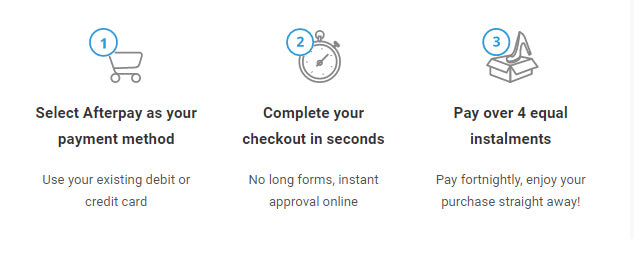SAME DAY SHIPPING!
Hurry offer expires in
Top 7 Barking Problems And How To Easily Train Your Dog
One of the most common ways for our dogs to communicate is probably what most of us are familiar with -barking! What does their barking tell us, and what can we do about them?
Note… This article gives some hints and tips on training your dog for dog barking problems… However,
Some people have already tried many different training options and are looking at Dog Bark Collar to Assist. Try these links below if this will help.
Vibration Bark Collar - Ultrasonic Bark Collars - Citronella Bark Collars - Electric Bark Collars
Dogs are considered man's best friend, and they build up that reputation by constantly conveying their needs and communicating with their owners.
Our furry friend's bark provides us insights into their feelings, state of mind, and emotions. We must pay close attention to the reasons behind their behaviour, and here are some of the top reasons why they bark.
Excessive Greeting Barking: Shows great excitement towards their owners and guests. Adorable most of the time but can be annoying in some instances.
Attention-Seeking Barking: Excessive barking to grab the attention of their owners. Especially noticeable in front of treats, rewards or that ‘Open That Door Now’ barking.
Socially-Facilitated Barking: Chorus barking of most dogs within an area.
Alarm Barking and Territorial Barking: A type of bark aimed towards strangers as an early warning.
Compulsive Barking: Dogs unleash a fury of uncontrollable barks for no apparent reasons.
Frustration-Induced Barking: A form of bark that shows a cry of frustration for not getting what they want.
What The Barking Means and How to Train Your Dog
Greeting Barking: My Dog Barks Too Much to Greet People
This kind of bark might be one of the most rewarding things that our dogs can give to their owners. Wagging tails filled with excitement, and their barks show enthusiastic solid emotions.
Greeting barks are generally friendly in nature and adorable at the same time. However, there are people (possibly neighbours) who may get annoyed by any unwanted noise.
The training starts with yourselves. You must control your urges and don't match the pace your dog. Instead of a frenzy greeting bark, your beloved companion would show anticipation and, eventually, control.
Attention-Seeking or Request Barking: Can’t Get Enough of Patting and Treats
Most of our beloved pets ask for their master's attention, and dogs are no exception to that. Their soft-pitch barks with a bit of emotion coming from their eyes usually convey that we need to spend more time with them.
Generally, request barking develops over time with the help of positive reinforcement. This means you and your family play a crucial part in controlling the overall behaviour of our dogs.
Let's say your pet barks at you while asking for a treat, try to show resistance by crossing your arms. If the barking persists, turn your back at them and wait until they settle.
Alarm Barking and Territorial Barking: Warns People to Stay Away from my Turf
Dogs engage in territorial barking mode when they sense unfamiliar presence within the vicinity, which our pets consider their turf. This usually includes our home, yard, car, and any place that holds significant value to you and your loyal companion.
On the other hand, alarm barking shows distinctive signs similar to territorial barking, but this one exhibits a more tense body language for each bark. Their sole purpose, provide warning to outsiders and alarm everyone that they consider family.
To control any defensive barkings, you can work on how your dog reacts to any stimulus. Block any direct sight from the cause of the commotion. Another effective way is to allow a pair of barks before giving out a specific call to your dog.
Socially-Facilitated Barking: Barking of Dogs Within the Area
Our four-legged friends are socially-driven creatures, and other canines usually facilitate social barkings in the area. If left unchecked, a bark within the neighbourhood can trigger that affects both the residents' and their pets' mental and social well-being.
Though social barking is part of their genetic makeup, the barkings can be controlled with the help of a bit of change in their environment. Providing other sources of sounds such as radios or televisions would also help.
The Nuisance Barking Problems.
Sometimes you may not be in a position to control the following types of dog bark problems. Often, we are not home and may receive unwanted notes in the letterbox. This might be the perfect time to consider getting a Dog Bark Collar.
Compulsive Barking: Uncontrollable Barking Behavior Without a Concrete Reason
A lot of dog owners can relate to their pets that do a varying degree of compulsive barking. In some cases, repetitive and uncontrollable barking can go overboard, similar to a broken record. If left unchecked, it could pose a severe issue for the residents around your vicinity.
In most cases, compulsive and excessive barking needs professional intervention to find the trigger. Tools such as training and electric collars can also be used as part of the taming process.
Frustration-Induced Barking: Venting Out Their Desires
We humans sometimes feel frustrated, and this rule also applies to everyone, including our pets. In situations where they are confined in an unfamiliar area, paired with a limited range of movement, brings a frustration-induced bark coming from our beloved companions. Isolation can also worsen the condition of our dogs.
Utilizing basic training commands such as "sit and stay" or "down and stay" can provide a quick reminder to our dogs to settle down.
Barking can be controlled as long as you know how to deal with it. However, in some instances, owning a training collar for our beloved pets can help us manage things more precisely. The Dog Line provides a wide range of essential pet care, including training tools to keep our furry friends under control at all times at an affordable and competitive price.
 The Dogline
The Dogline

















